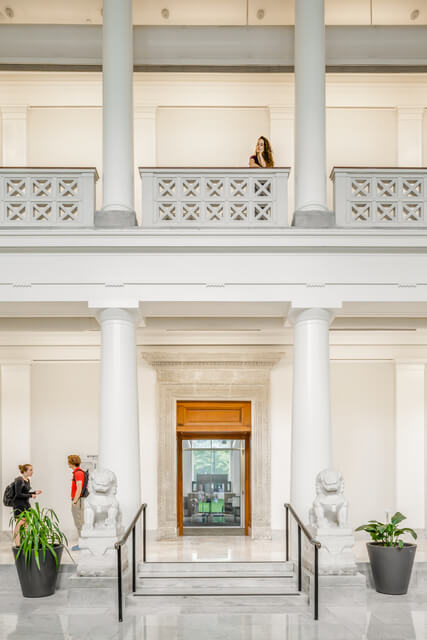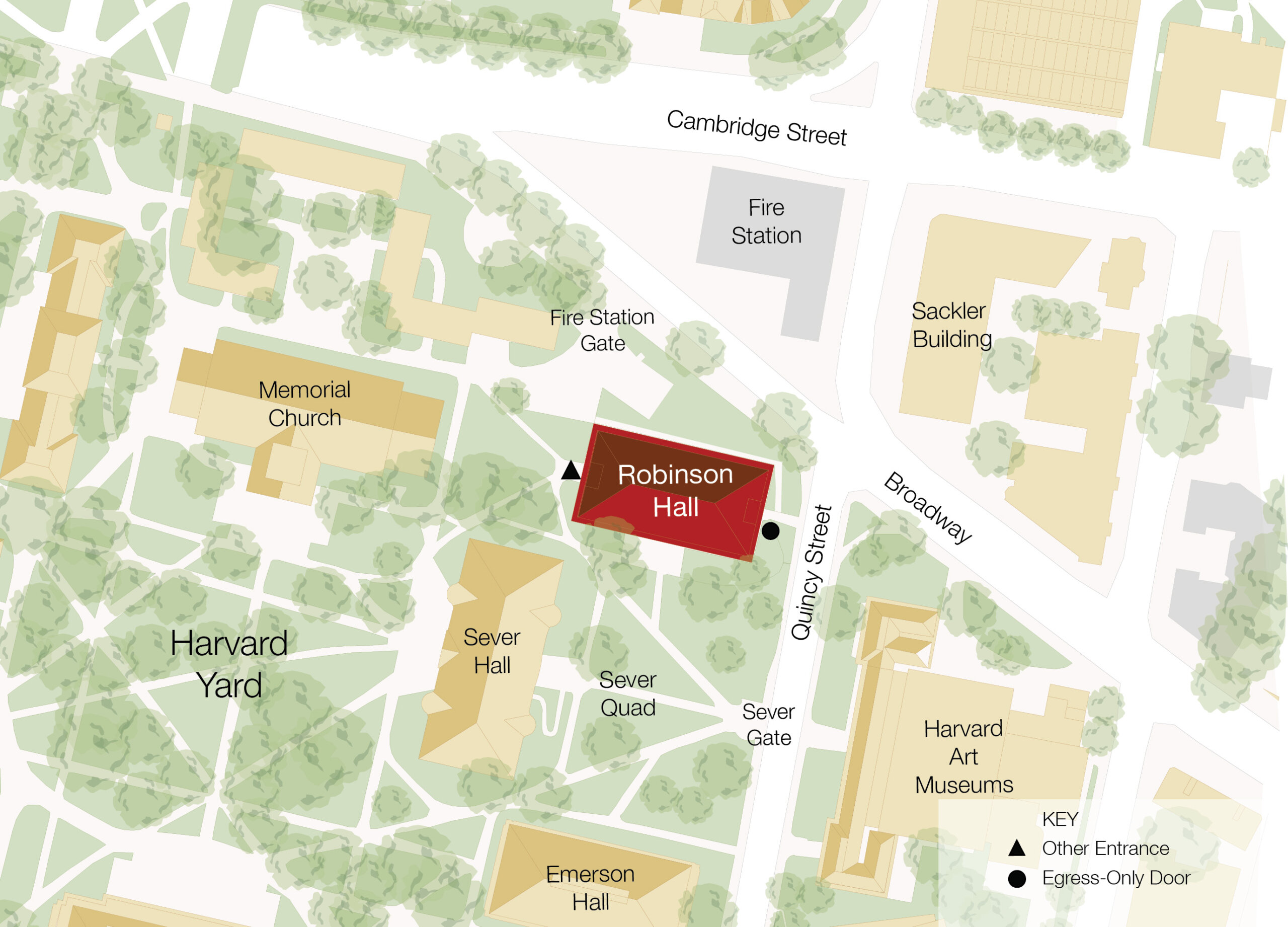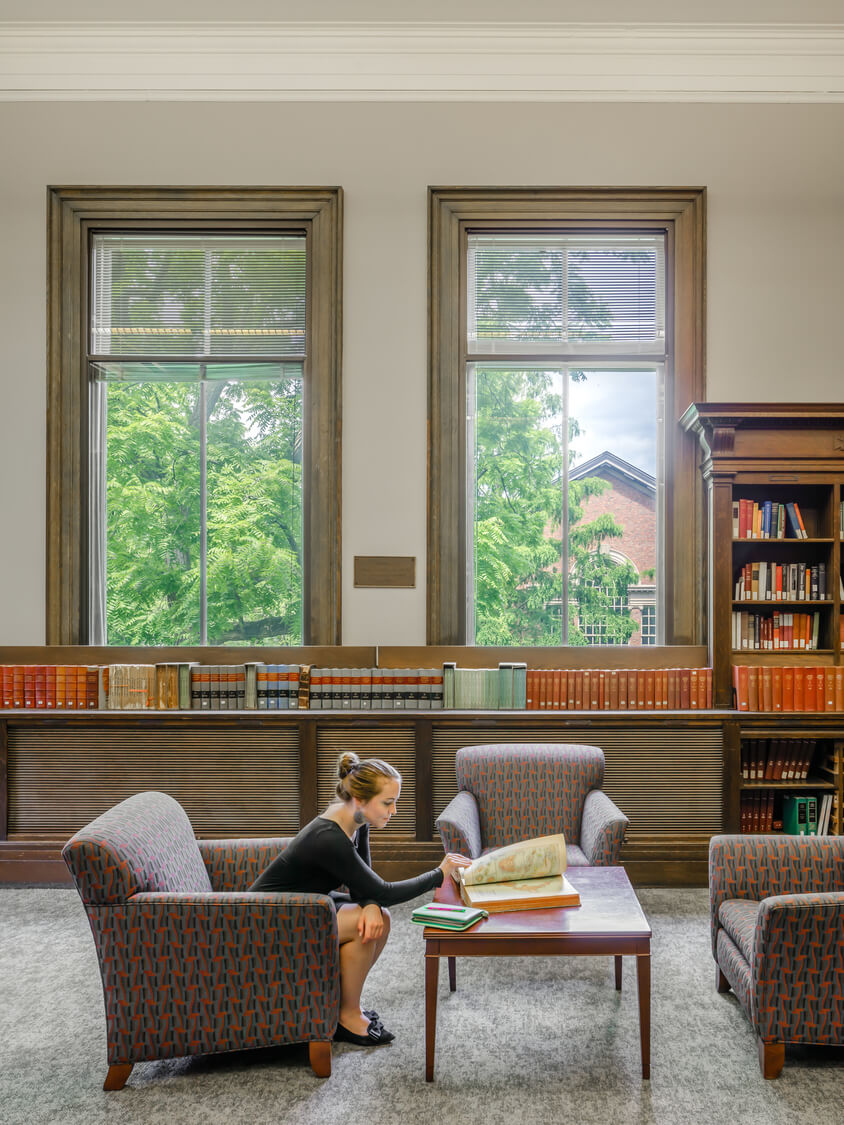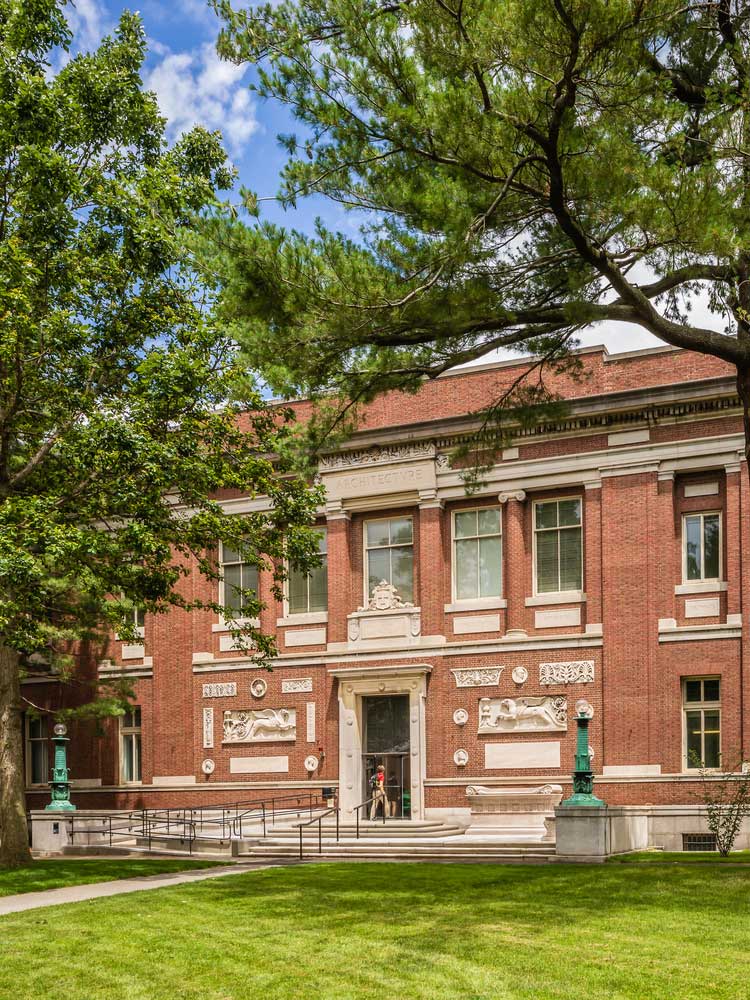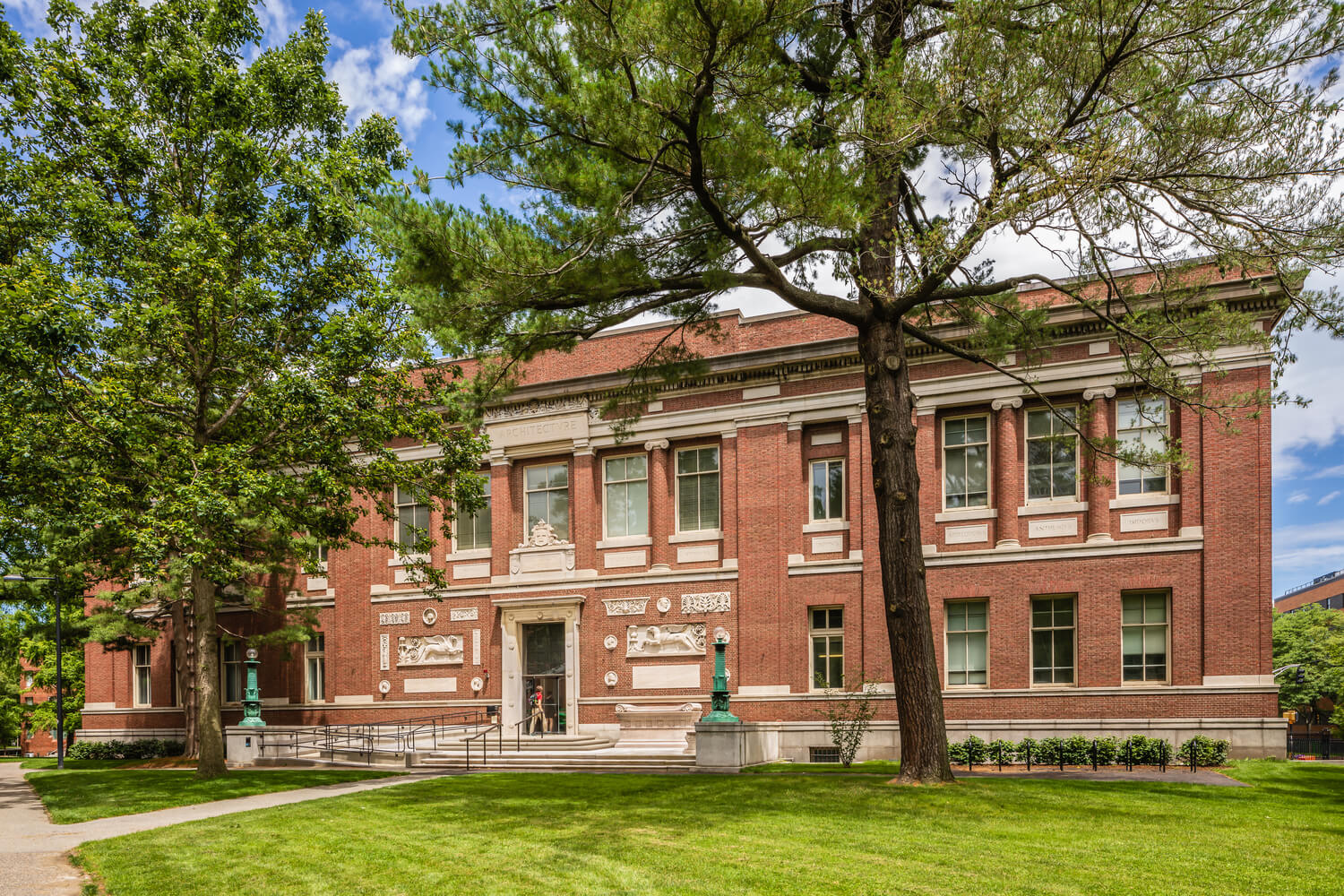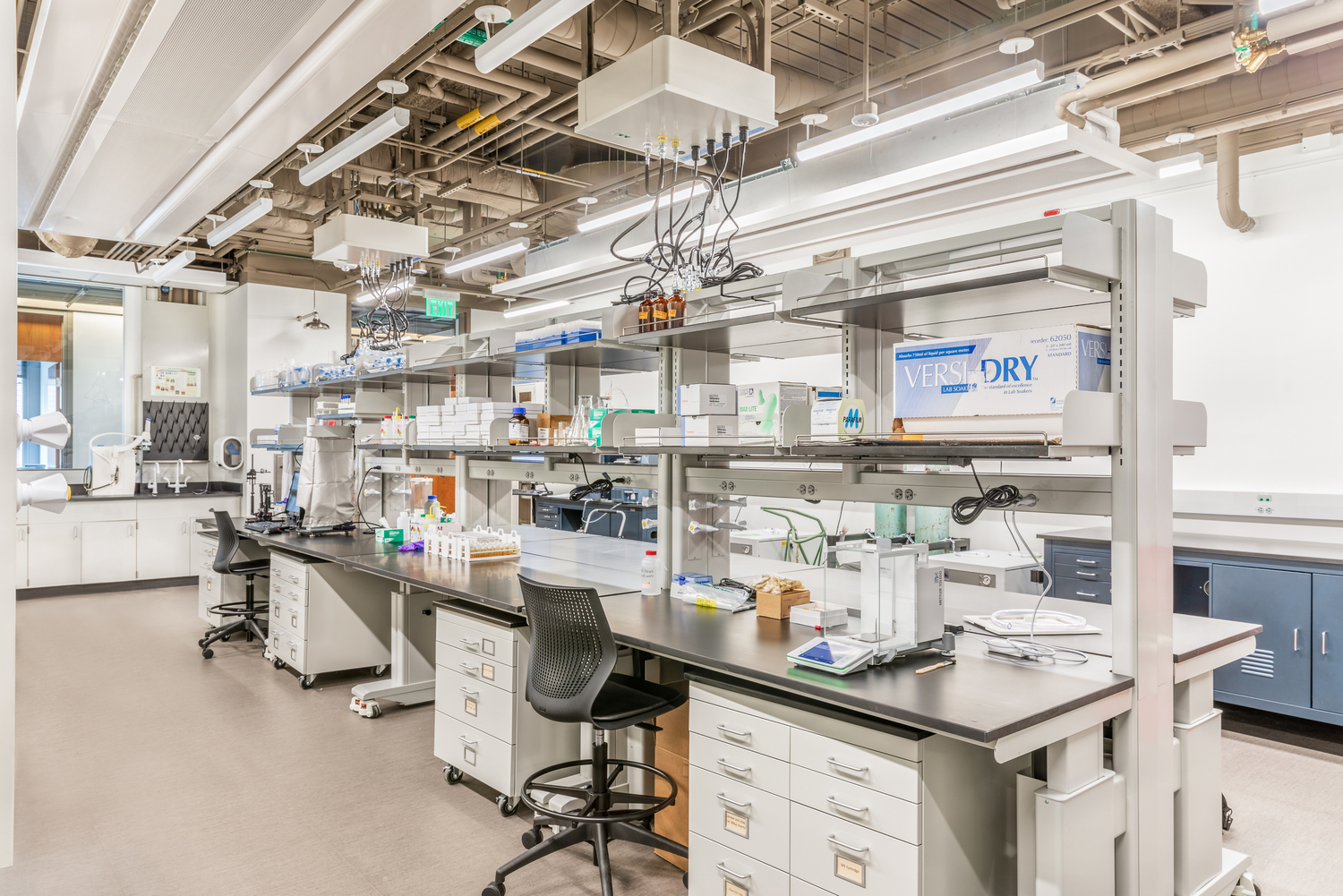Robinson Hall is listed on the National Register of Historic Places.
An ornate, Beaux-Arts style building designed by architect Charles McKim, the hall became the academic home of the Department of History in 1972. The building’s red brick and limestone edifice extends the architectural language of Harvard Yard.
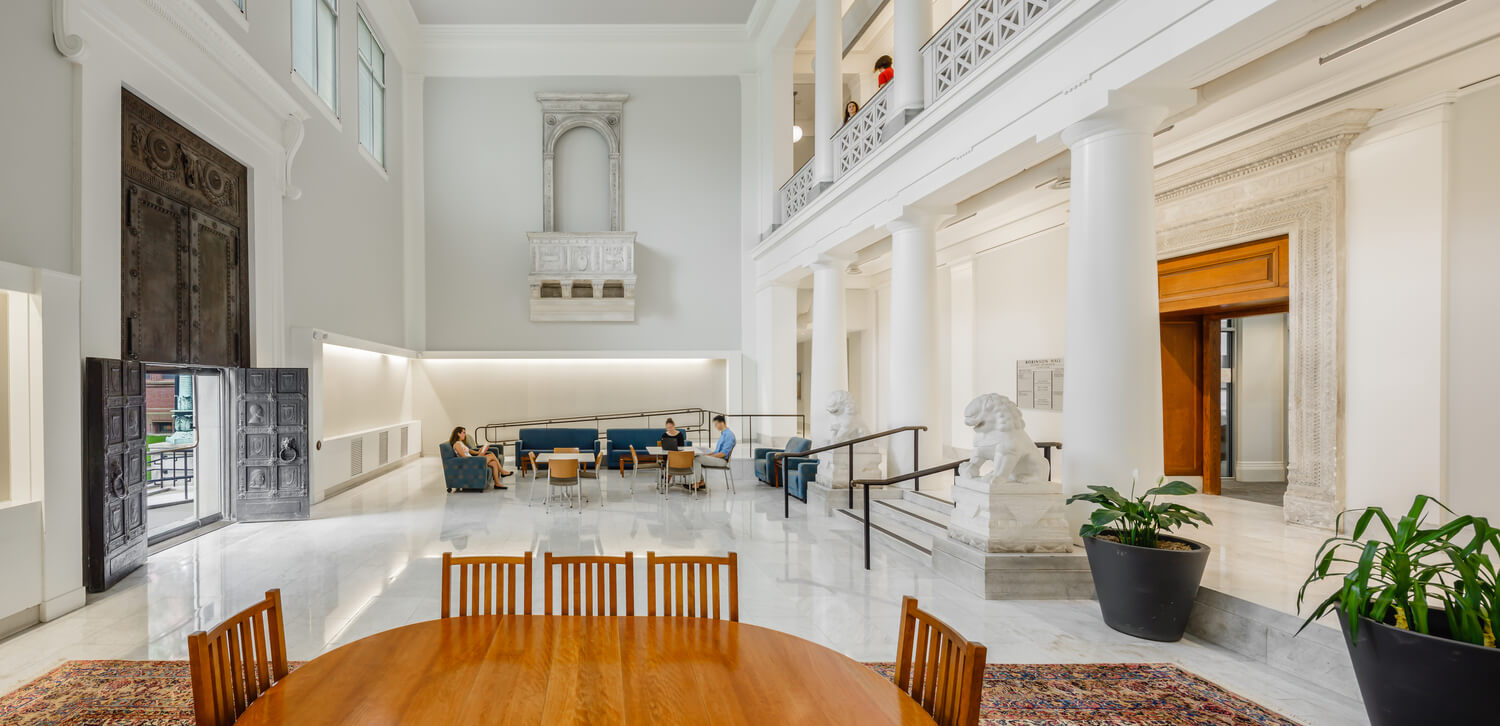
Its marbled floors, colonnaded Great Hall, and plaster details of its interior establish a lineage to Western classical tradition.
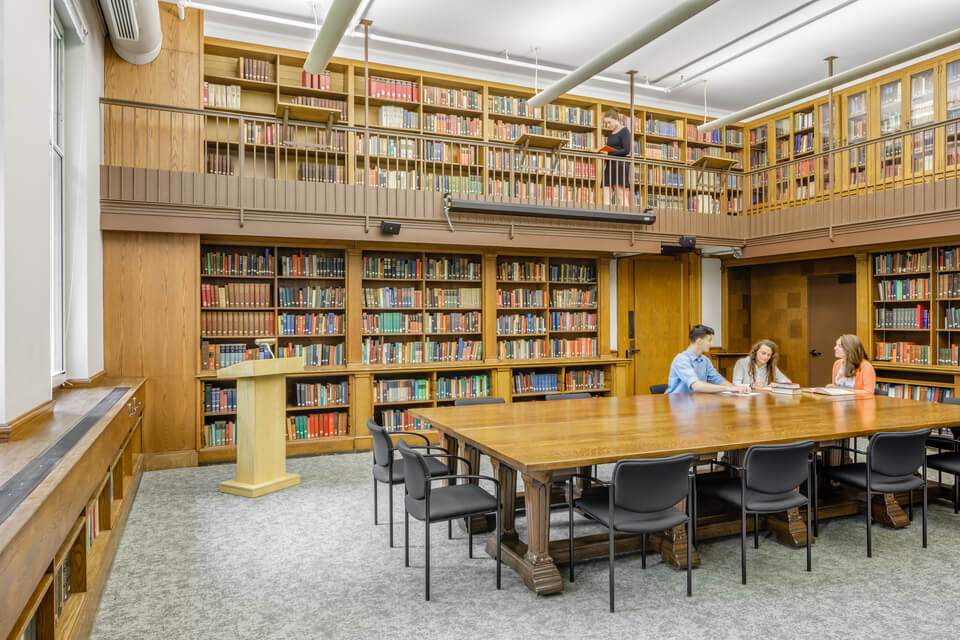
The team assessed the impact of renovation on existing spaces, developing design concepts to meet current and future needs. The renovation focused on discrete accessibility improvements like restroom upgrades and a new elevator. These changes called for additional code upgrades and relocations of office and administrative space.
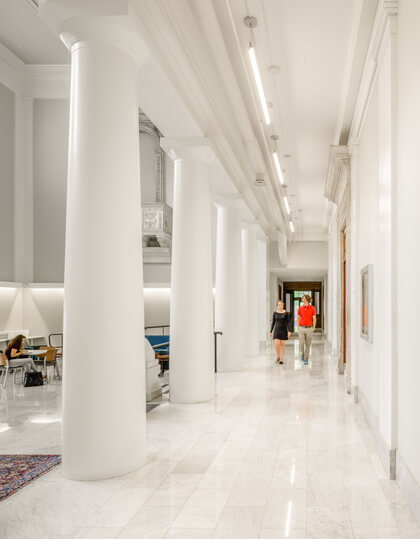
Elevator lobbies and office entrances complement McKim’s original work.
Details include matching marble flooring and wall base and stained oak millwork-encased openings. The installation of fire sprinklers prompted the removal of obsolete steel and wired glass partitions from the 1970s, restoring the axial hallway to its original 1904 layout.
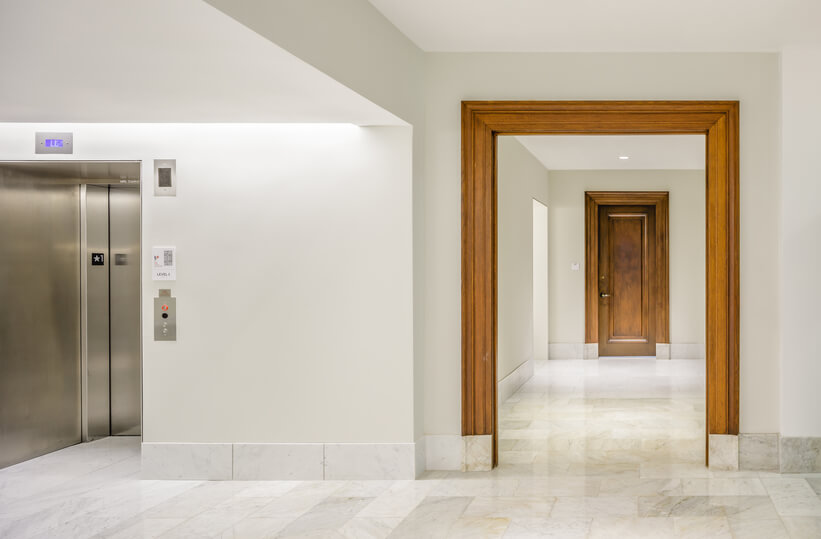
A new elevator ensures accessibility on every floor, including the mezzanine.
The design introduces ADA-compliant restrooms, new and renovated, including updated fixtures, finishes, and lighting.
Accessibility is bolstered by converting four undersized meeting rooms into two versatile seminar rooms. Each room is equipped with modern audiovisual systems and flexible furniture.
Details include matching marble flooring and wall base and stained oak millwork-encased openings. The installation of fire sprinklers prompted the removal of obsolete steel and wired glass partitions from the 1970s, restoring the axial hallway to its original 1904 layout.

A new elevator ensures accessibility on every floor, including the mezzanine.
The design introduces ADA-compliant restrooms, new and renovated, including updated fixtures, finishes, and lighting.
Accessibility is bolstered by converting four undersized meeting rooms into two versatile seminar rooms. Each room is equipped with modern audiovisual systems and flexible furniture.
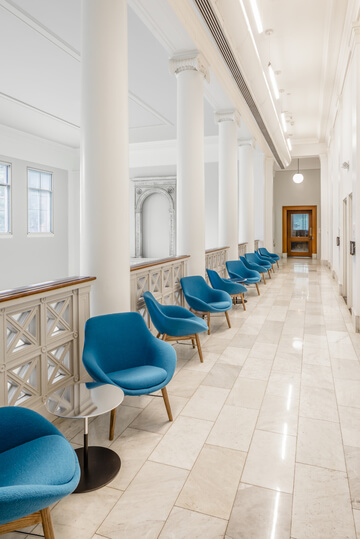
A minimalist lighting approach brightens the interiors. The design removes the visual distractions of the 1970s renovation, turning instead to high-efficiency linear lighting that emphasizes the building’s structural bays.
The renovated Robinson Hall meets code requirements while maintaining historical integrity.
- The design removes physical barriers such as raised floor thresholds and non-grippable door hardware, the latter replaced by electronically assistive doors.
- Statuary bronze systems replace the railings and ramp guardrails at entrances and exits.
- An accessible emergency egress route links the lower level to Harvard Yard’s exterior circulation system, with custom lighting poles to match the Yard’s aesthetic.
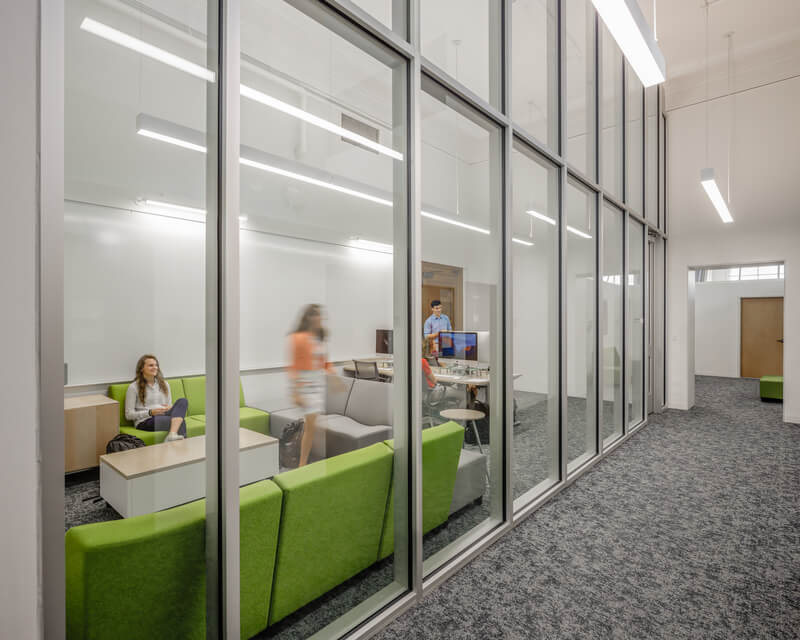
The renovation was an opportunity to improve the quality of the space.
Harvard chose to consolidate the faculty offices in the naturally lit perimeter, maximizing their size. The media lounge, kitchenette/workroom, and storage spaces moved to the interior.
The team worked closely with the construction manager to set clear circulation patterns. This was enabled by strategic modifications to the building’s masonry and steel framework. New vestibule spaces within the Great Hall connect the main circulation corridor to new restrooms.
